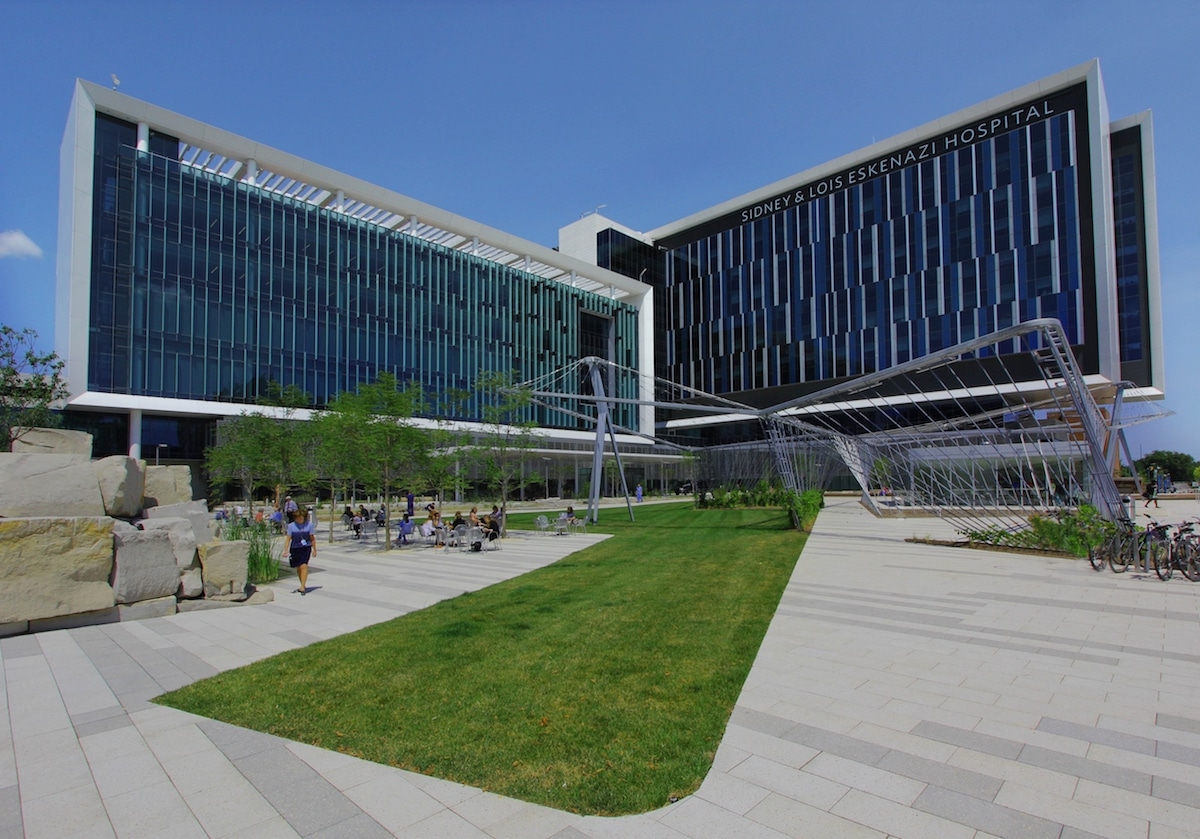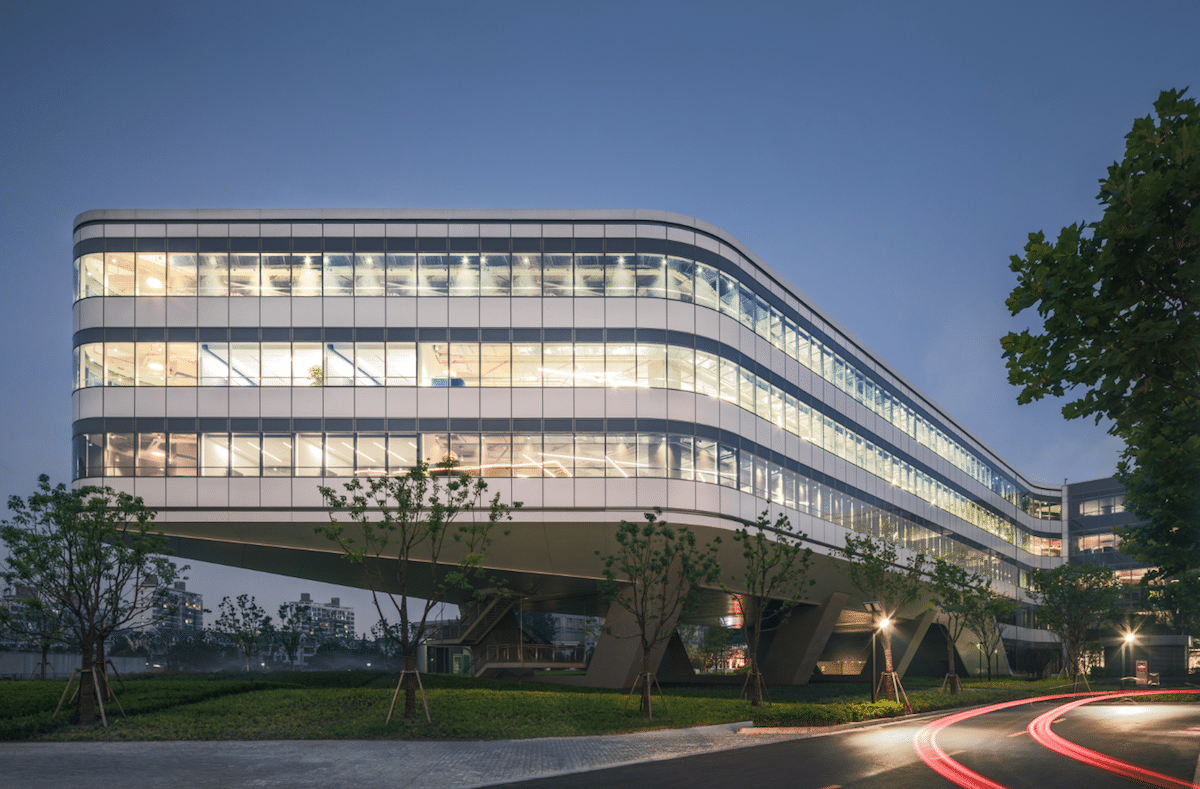
[Photo: Courtesy of Johnson Controls]
“Every building operator, facility manager, and even building occupant is part of the solution.”
Clay Nesler is vice president of global energy and sustainability at Johnson Controls. As a leader in the green building movement, he received USGBC’s Leadership Award in 2017. For Nesler, smart technology and sustainability go hand-in-hand. “The next generation of high-performance buildings will not only save energy and be net-zero carbon, but they will also improve the health, wellness, and productivity of people working there,” he says. “They’re going to be smart buildings.”
gb&d: How are Johnson Controls’ initiatives affecting the green building industry?
Nesler: We’ve positively influenced the green building market by leading by example. Our Brengel Technology Center in Milwaukee was one of the first LEED buildings. We had an employee on the USGBC board when they developed LEED. He came running back to Milwaukee and said, “We have to do this!”
When we looked at the draft requirements for LEED, we realized the things we’d been implementing in our facilities and for our customers for years lined up very well with the LEED rating system. We only had to make a few changes to the original design. The technology center was certified LEED Silver, and it was one of the first 12 buildings to be certified.
gb&d: Has Johnson Controls certified other green buildings?
Nesler:We were going to do a very minor boardroom update, but a simple update turned into building two new buildings and renovating two existing—all four are LEED Platinum. It’s now the highest concentration of LEED Platinum buildings on one campus in the world. What’s notable about that is the project started right when the 2008 recession hit. It would’ve been easy for our CFO and our CEO to say, ‘Two of our biggest customers and our largest competitors just filed for bankruptcy—is this really the best time to build LEED Platinum?’ But our CFO said, ‘We’ve been around for 130 years; we’re going to be around for another 100 years. We know these technologies pay for themselves.’ So, they produced a great campus. Shortly thereafter, we made a policy that every building we build has to be a certified green building, and that includes manufacturing facilities, R&D test labs, office buildings, and customer showcases.

Johnson Controls helped Eskenazi Hospital deliver better care at a lower cost with their smart solutions. [Photo: Courtesy of Johnson Controls]
gb&d: How is Johnson Controls promoting sustainable buildings globally?
Nesler: We just put the final flag in our new Asia Pacific headquarters in Shanghai. It’s the first building in China to be triple certified—it’s LEED Platinum, China Three Star, and EDGE certified. It’s one of the most sustainable buildings, certainly within our portfolio, but also in China. It uses 48% less energy than a new office building in Shanghai that would meet the strictest local building codes. It’s a showcase for all of our technologies. It includes ice storage, battery storage, heat pumps, high efficiency chillers, solar PV.
gb&d: What initiatives have you worked on with the World Resources Institute (WRI)?
Nesler: I helped create the Building Efficiency Initiative. About 10 years ago, we created the Institute for Building Efficiency at Johnson Controls. It was very successful. We had the largest ongoing survey of commercial building owners in the world. But we wanted to go global. We had expanded in size and reputation, produced a lot of great research, and hosted events, but we found that we didn’t have the internal capabilities to truly go global.
So we merged with the Ross Center for Sustainable Cities, which was a new initiative at WRI. I spend 25% of my time at WRI in Washington, DC and I’m supporting the Building Efficiency Initiative. Our program is called the Sustainable Energy for All Buildings Efficiency Accelerator. It started under the UN, and it’s focused on increasing investment in energy efficiency by local governments and subnational governments. We receive funding from the Global Environment Facility, which is part of the World Bank. WRI is the coordinator and Johnson Controls is the industry co-convener. We’re putting a lot of time and effort into this. We’re going to double the number of cities we’re serving over the next two years.
gb&d: How is the Sustainable Energy for All Buildings Efficiency Accelerator program advancing green buildings?
Nesler: We’re working with 35 cities around the world along with 40 international partners that are large companies, think tanks, and non-governmental organizations like the World Green Building Council and the USGBC. We work with those cities to implement policies to drive investment in energy efficiency, implement a demonstration project that demonstrates the value of improved energy efficiency, and we help them put in place a measurement and tracking framework so they can report their results. The idea is just like the name. We find cities that have ambition and some capabilities but need to accelerate faster. So we help them implement national building codes, retrofit public buildings, and incentivize green buildings.
We’ve found that in countries like Mexico where we’re working with two states and three cities, once one city like Mexico City puts in place an innovative project then Mérida wants to do it, and then Guadalajara, and then the state of Sonora. That attracts the attention of the national government, who then provides support to those cities.

Johnson Controls created a smart Asia-Pacific headquarters in Shanghai. [Photo: Courtesy of Johnson Controls]
gb&d: What got you interested in sustainability?
Nesler: When I was in college, the solar energy market was booming. Jimmy Carter was president and energy conservation was top of mind. There were a lot of incentives, and there was a booming market across the country. But throughout the course of my undergraduate degree, those incentives were taken away and the market essentially dried up. But I was still very interested. I was in the solar energy club in engineering school at college, and I was taking energy policy classes.
I was all set to be an energy policy wonk, and then the market went away. I thought, well, I love energy, so maybe if I can’t be on the supply side, I’ll go on the demand side. I ended up being a summer intern at Johnson Controls and loved the company. I went back and I’ve been there since. I started in research, and then I ran product development, marketing, strategy, and innovation. For about the last 10 years I’ve essentially been the chief sustainability officer.

Johnson Controls helped Methodist Le Bonheur Healthcare construct a sustainable pediatric medical center. [Photo: Courtesy of Johnson Controls]
gb&d: How have smart controls changed in the last 10 years?
Nesler: Technologies for buildings in general have changed quite a bit. Our building management systems don’t just start and stop things based on schedules. They’re really data analytics platforms that take data, convert it into information, and analyze the information to create insights that help facility managers optimize building performance. This smart technology is very important because some of it is embedded in the equipment and makes it more efficient, yes, but we now have technology that makes every building operator, facility manager, and even building occupant part of the solution.
And frankly, buildings are getting more complex. We’re seeing this idea of hybrid systems where different spaces with uses for different people have different systems, and it’s going to be the controls that glue those things together and coordinate the operations.
It’s good to increase the efficiency of individual components, but we’re now seeing systems-level efficiency, whereby designing buildings with multiple components coordinated by intelligent controls and monitored by advanced analytics can deliver much better performance at about the same cost as buildings designed, built, and operated the old way.
gb&d: What other sustainability efforts have you been a part of?
Nesler: In addition to WRI, I’m the industrial advisory board chair for the US-China Clean Energy Research Center, so I’m very involved in our bilateral work with China to transfer knowledge and policies, so China, where half of all buildings are being built every year, can build their new cities and districts to be as efficient and sustainable as possible, hopefully using the most state-of-the-art technologies available. It’s good for business and for the planet.
I’ve always been interested in international aspects of green buildings. We’re very much involved in the Americas regional network, like Latin America and Central America. We’re really supporting the grassroots work there as well.
We’re also turning Maui College into a net-zero carbon campus with 100% renewables. We’re working with seven of the airports, all the harbors, all the highways in Hawaii and putting in lighting and HVAC improvements, and really contributing to their goal of reducing fossil fuel use by 50%.

